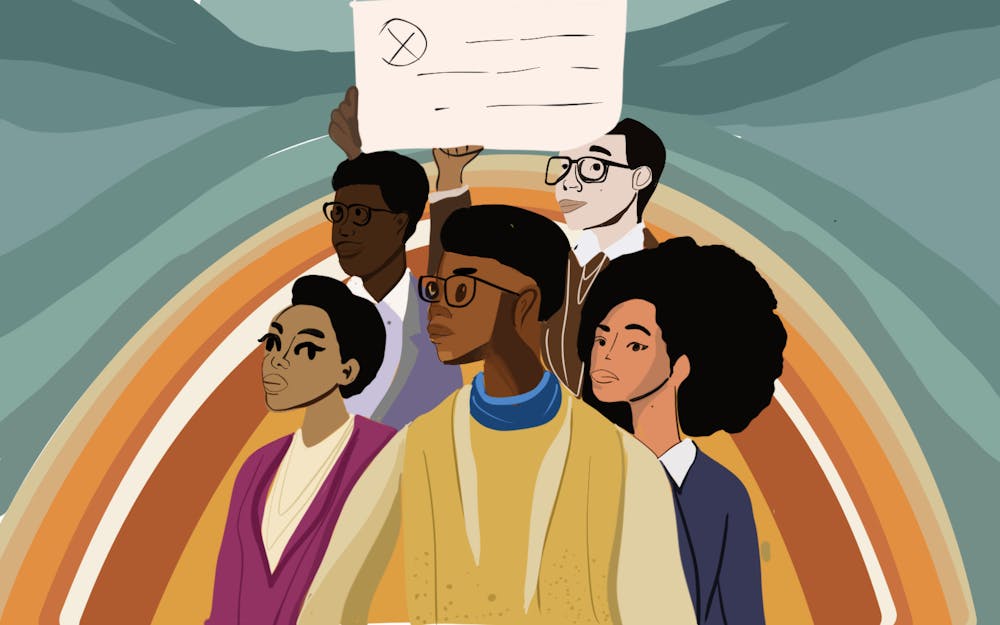The 1968 Columbia University protests represent the pinnacle of student-led activism. These protests were invoked for two main reasons. First was resistance against the proposal to build a gymnasium for the university which would lead to the displacement of the local minority population of Harlem, seen as a move toward segregation. Second was a demand for the university to cut ties with the Institute for Defense Analyses, a think tank affiliated with the U.S. Department of Defense — which at that time was involved in the bloody war of Vietnam. Opposition to this war was the primary reason they demanded divestment from IDA.
After a long struggle of more than 1,000 protesters occupying university buildings and occasional scrambles with law enforcement, Columbia accepted their two main demands. They scrapped the plan to build a new gym and cut ties with the IDA. Student protests like this are a source of hope for students today tirelessly fighting for their values.
Protests in general tend to follow a basic structure. There is a reason for discontent with the status quo. An identification of a problem in the system is key for a protest to be invoked. Then an appeal is made for solving this problem by challenging the status quo. The power to change is not directly held by the people facing the problem — in a republic, this is generally through representatives who can vote on laws. This power gap is filled by disrupting the status quo to gain recognition of the appeal. Then these demands are either accepted or clamped down upon. There are a lot of nuances to protesting, but this overview is essential in understanding protests at universities as a microcosm of a county, state or even a country.
The stage of appeal or just making the dissenters’ presence felt requires a lot of organization. This organization involves hours of meetings, practicing escalations, training to deal with the police — figuring out ways to stall them and just deciding on how comfortable everyone involved is with pushing the legality of their right to protest. Legality presents an interesting aspect of confining protests to a legal and an illegal definition. I believe this is antithetical to the very nature of a protest. The presence of protesters cannot be felt without disruptions, they often involve crossing boundaries of acceptability to catch people’s eye.
College campuses provide a perfect environment to incubate a spirit of protesting. Students tend to spend most of their time on college campuses, either in classes, club meetings or just by living in on-campus housing. This sheer proximity is essential in fostering a sense of community, which is essential in organizing a protest. Students with common political values are easily accessible to each other. College students tend to be heavily politically active; this perhaps leads to politics dominating their daily conversations or at least playing a significant role. A possible explanation could be that during transition to adulthood this demographic faces, they gain a heightened sense of civic responsibility by gaining the right to vote.
College may represent a sense of freedom for an individual to build their identity as they go through this crucial phase of life. Politics has increasingly become a central part of one’s identity. Advocating for a position is best represented by protesting for that position to become reality.
Participating in a collective action like a protest creates a feeling of community. This community consists of members who share similar values and trust each other. The trust aspect of a protest is easier to achieve on a college campus. Every participating member is aware of their background, as they are college students. This background information is a commonality that helps build trust which is perhaps not possible in other public contexts.
Participating in protest also contributes to two fundamental goals of a college education is to create awareness that counters ignorance and fosters a learning environment. There must be an adequate educational process before a protest is carried out. Protesters must be fully aware of what they are fighting for. This is obvious as the strength of the idea is enough to mobilize people. However, the strength of an idea is no evidence of its quality, and this is important when one tries to analyze these protests.
Educating people is natural to student protests. Protests at a college level represent a confluence of education and early political mobilization that produces socially conscious citizens. The real-life policy changes like during the 1968 Columbia protests may induce build public trust in the institutions that govern them. Overall, protesting in university is something that everyone should participate in to build a good conscious self and a conscious population.
Advait Save (he/they) is a freshman studying economics and sociology.






